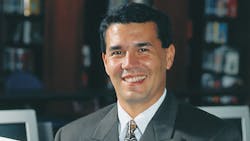As 2014 kicks into gear, many believe it will be tough for the new year to match the resiliency exhibited during 2013. While the nation continued to slowly recover from the Great Recession, unemployment remained high, the federal government shut down, fear of a U.S. financial default loomed—yet financial markets skyrocketed to all-time highs.
But the good fortune of Wall Street in 2013 was not shared by the majority of us. Schools and universities continued to feel the financial challenges that have become all too familiar to those running our nation’s education institutions.
As reported in American School & University’s December Education Bond Alert, schools in November approved almost $6 billion worth of funding for future construction and renovation projects. Although not among the largest monthly amounts passed when compared with other months over the past decade or so, it still represents a healthy amount of planned spending and exhibits a thawing of public acceptance of the need to invest in capital-improvement projects.
Among the largest bond issues passed in November 2013:
•Fort Worth (Texas) ISD: $489.6 million (three separate issues).
•United (Texas) ISD: $408.7 million.
•Denton (Texas) ISD: $312 million.
•Chesterfield County (Va.) School District: $304 million.
•Charlotte-Mecklenburg (N.C.) School District: $290 million.
A number of bond issues proposed in November, however, were not as successful. Among the largest that failed to muster voter approval:
•Jordan (Utah) SD: $495 million.
•Comal (Texas) ISD: $451 million.
•Gresham-Barlow (Ore.) School District: $210 million.
•Farmington (Mich.) School District: $186.2 million (two separate issues).
•San Mateo-Foster City (Calif.) School District: $130 million.
Many large education capital projects are expected to be introduced this year. For example, the Fairfax County (Va.) School District has identfied $866 million in facility needs as part of an effort to address surging enrollment in the district.
One of the big challenges that remains is convincing constituents that as the economy continues to improve in 2014 and beyond, that investment in building, improving and modernizing education facilities is vital to creating successful learning environments.
About the Author
Joe Agron Blog
Editor-in-Chief and Associate Publisher
Joe Agron is the editor-in-chief/associate publisher of American School & University magazine. Joe has overseen AS&U's editorial direction for more than 30 years, and has helped influence and shape national school infrastructure issues. He has been sought out for comments by publications such as The Wall Street Journal, The New York Times, USA Today, U.S. News & World Report, ABC News and CNN, and assisted with the introduction of the Education Infrastructure Act of 1994.
Joe also authors a number of industry-exclusive reports. His "Facilities Impact on Learning" series of special reports won national acclaim and helped bring the poor condition of the nation's schools to the attention of many in the U.S. Congress, U.S. Department of Education and the White House.
